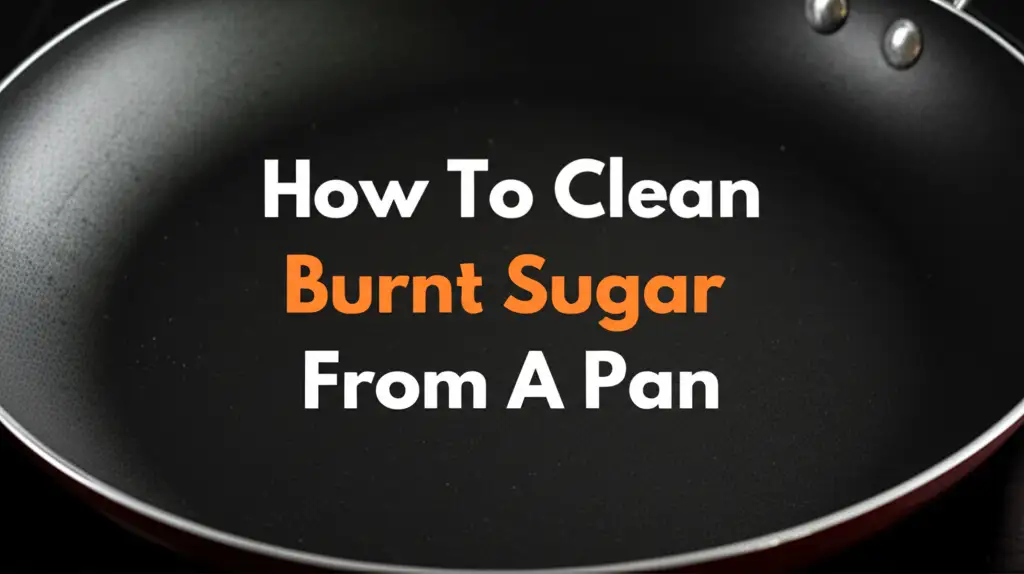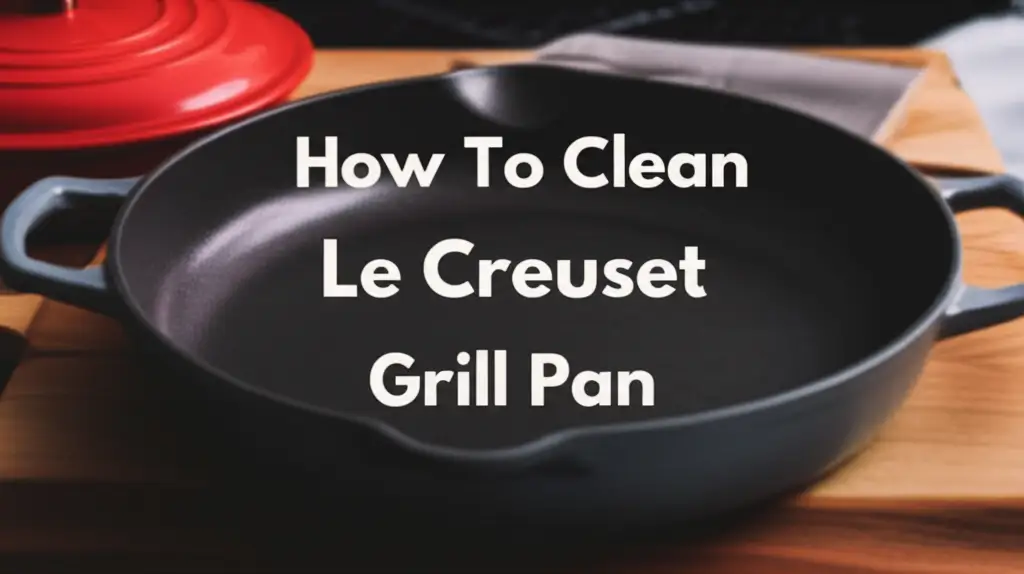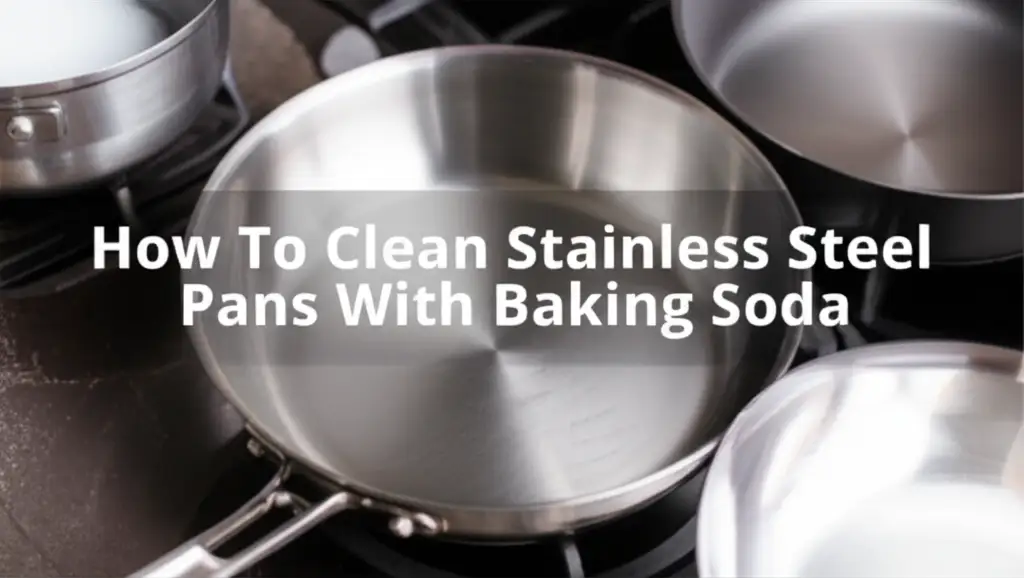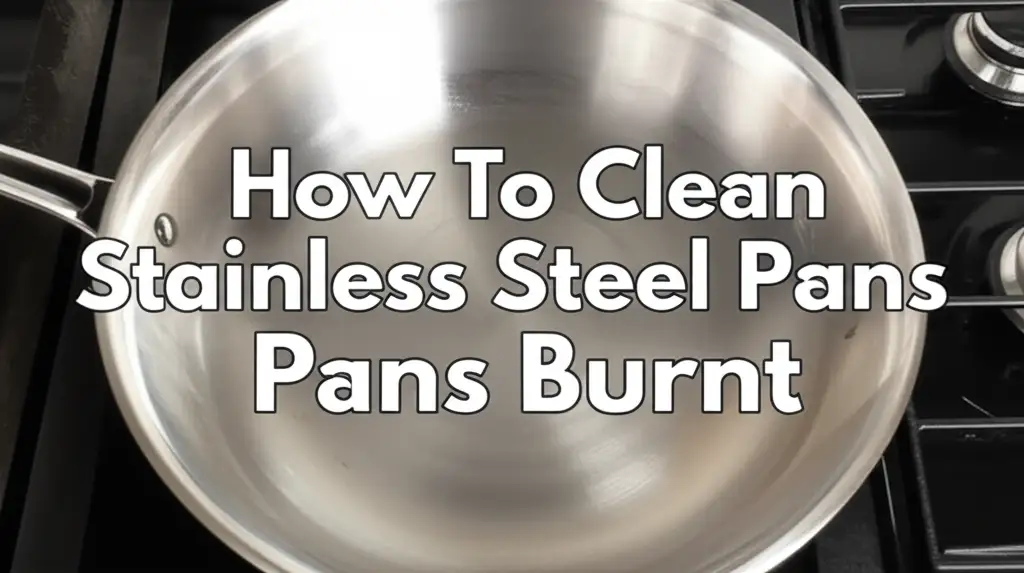· Kitchen Cleaning · 11 min read
How To Clean Burnt Sugar From A Pan

Clean Burnt Sugar from Pans: Your Ultimate Guide
Have you ever been making a beautiful caramel sauce, only to turn your back for a second and find a sticky, blackened mess at the bottom of your pan? It happens to the best of us. Burnt sugar feels permanent. It clings fiercely to metal and seems impossible to remove.
But do not give up on your favorite pot or pan just yet. This article helps you clean burnt sugar from a pan effectively. We cover various methods using common household items. You will learn the best ways to tackle even the most stubborn burnt sugar residues. We also share tips to keep your cookware pristine in the future.
Takeaway:
- Soak the pan immediately in warm, soapy water.
- Use baking soda and water for a gentle abrasive scrub.
- Employ vinegar and water for acidic dissolving power.
- Boil water with dish soap for tough, caked-on sugar.
- Prevent future burns by managing heat and stirring well.
To clean burnt sugar from a pan, first let it cool. Then, soak the pan in warm water with dish soap to loosen the sugar. For stubborn residue, use methods like boiling water with baking soda or vinegar to break down the burnt sugar effectively.
Understanding the Challenge of Burnt Sugar
Burnt sugar presents a unique cleaning challenge. It transforms from a sweet, crystalline substance into a hardened, carbonized layer. This transformation happens when sugar heats beyond its caramelization point. The sugar molecules break down. They form a tough, sticky, and often black residue.
This residue bonds strongly to the pan’s surface. Simple scrubbing often does not work. It can even damage your pan. We need methods that break these bonds. We target the sugar’s chemical structure. This makes it easier to lift away. Knowing this helps us choose the right cleaning approach.
When sugar burns, it becomes an almost rock-hard layer. This layer resists typical scrubbing. It often requires specific chemical or heat-based interventions. The key is to dissolve or soften the carbonized sugar. This allows for safe removal without harming the pan. Understanding the problem guides our cleaning solutions.
The Gentle First Step: Soaking and Scraping
Before you reach for harsh chemicals or abrasive scrubbers, try the simplest approach. This method is often enough for freshly burnt sugar or less severe incidents. It uses the power of time and water. This first step prepares the pan for deeper cleaning.
First, let the pan cool down completely. Do not run cold water into a hot pan. This can warp your pan, especially stainless steel or cast iron. Once cool, fill the pan with warm water. Add a generous squirt of dish soap. Let it sit.
Allow the pan to soak for at least an hour. For very stubborn sugar, let it soak overnight. The warm, soapy water will slowly soften the burnt sugar. It helps loosen its grip on the pan’s surface. After soaking, gently try to scrape the burnt bits with a wooden spoon or silicone spatula. Avoid metal scrapers, as they can scratch your pan. This gentle method often removes a surprising amount of residue.
Baking Soda: Your Go-To for Burnt Sugar
Baking soda is a miracle worker in the kitchen. It is especially effective for cleaning burnt sugar. Its mild abrasive quality helps scrub away residue. Its alkaline properties also react with the burnt sugar. This helps to loosen its stubborn grip. This method is safe for most pan types, including stainless steel and non-stick.
To use baking soda, first remove as much loose sugar as possible after soaking. Then, sprinkle a generous layer of baking soda over the burnt area. Add just enough warm water to form a thick paste. Ensure the paste covers all the burnt spots. Let this paste sit for several hours. For very tough stains, let it sit overnight.
The longer the paste sits, the more it works. After soaking, use a non-abrasive sponge or soft brush to scrub the area. The baking soda provides gentle abrasion. It helps lift the burnt sugar away. Rinse the pan thoroughly. You might need to repeat this process for heavily burnt pans. For more ways to use this versatile cleaner, explore how to clean with vinegar and baking soda. This method is also excellent for cleaning baked-on grease from pans, similar to how it tackles burnt sugar. Learn more about how to clean baked-on grease from pans.
Vinegar’s Acidity: Dissolving the Stickiness
Vinegar is another powerful natural cleaner. Its acidic nature helps dissolve the caramelized sugar. This method works well on stainless steel and ceramic pans. Avoid using strong acids on cast iron, as it can strip the seasoning. Vinegar is excellent for breaking down sticky residues.
Start by pouring enough white vinegar into the pan to cover the burnt sugar. Add an equal amount of water. Bring this mixture to a gentle simmer on the stovetop. Let it simmer for 10-15 minutes. The heat helps the vinegar penetrate the burnt sugar layer. You will often see the burnt sugar beginning to lift and separate from the pan.
After simmering, carefully remove the pan from the heat. Let it cool down. Once cool, pour out the vinegar solution. Use a non-abrasive sponge or brush to scrub away the loosened sugar. The vinegar makes the sugar much easier to remove. Rinse the pan well with warm water and soap. Vinegar and baking soda are a powerful cleaning combination for many household tasks, including how to clean with vinegar and baking soda in various applications.
Boiling Water and Dish Soap for Stubborn Residue
Sometimes, soaking and pastes are not enough. For truly caked-on burnt sugar, boiling water provides the heat needed to break those stubborn bonds. This method combines heat with the degreasing power of dish soap. It is very effective for thick layers of burnt sugar. This technique is suitable for most metal pans.
Fill the pan with about an inch of water. Add a few drops of liquid dish soap. Place the pan on the stovetop and bring the water to a boil. Let it boil vigorously for 10-15 minutes. The boiling water and soap work together. They soften and lift the burnt sugar. You will see bits of sugar loosening and floating in the water.
After boiling, turn off the heat. Carefully pour out the hot water. The burnt sugar should now be much softer. Use a wooden spoon or plastic scraper to gently push the softened sugar away from the pan’s surface. Finish by washing the pan with warm, soapy water. This method is particularly effective for any type of burnt residue, much like cleaning burnt grease from the bottom of frying pans. Discover more about how to clean burnt grease from bottom of frying pans.
Abrasive Solutions: Salt, Lemon, and Cream of Tartar
When sugar is deeply burnt, you may need a mild abrasive. Natural abrasives like salt or cream of tartar can help. These ingredients provide friction without scratching most pan surfaces. They work especially well when combined with a little moisture. This creates a scrubbing paste.
For salt, cover the burnt area with a thick layer of coarse salt. Add a few drops of water or lemon juice to create a paste. Lemon juice adds an acidic boost. Let it sit for 15-20 minutes. Then, use a non-abrasive scrubber to gently scrub in circles. The salt crystals act as tiny scrubbing agents. They lift the burnt sugar.
Cream of tartar works similarly. Mix a tablespoon of cream of tartar with a cup of water in the pan. Bring it to a boil. Simmer for about 10 minutes. The acidic solution helps loosen the burnt sugar. After cooling, scrub the pan clean. These methods are excellent for stainless steel and non-stick surfaces, like when you need to clean burnt oil from a stainless steel pan. Find out more about how to clean burnt oil from stainless steel pan. They are also useful for specialized surfaces, such as learning how to clean non-stick iron plate when burnt.
Prevention is Key: Avoiding Burnt Sugar Incidents
The best way to deal with burnt sugar is to prevent it in the first place. Avoiding burnt sugar saves time and preserves your cookware. A few simple practices can make a big difference in your cooking habits. These tips help you manage sugar’s heat.
First, always use medium to low heat when cooking with sugar. Sugar burns quickly at high temperatures. Patience is crucial for caramelization. Second, stir constantly. This ensures even heating. It prevents sugar from sticking and scorching in one spot. A silicone spatula is ideal for this.
Also, use a heavy-bottomed pan. These pans distribute heat more evenly. This reduces hot spots where sugar can burn. Always pay close attention when sugar is cooking. Do not step away from the stove. If you notice sugar starting to smoke or darken too quickly, remove the pan from the heat immediately. A little prevention saves a lot of cleaning effort.
Pan Care After Cleaning Burnt Sugar
Cleaning burnt sugar can be tough on your pans. Proper care after a deep clean ensures their longevity. It also prepares them for future use. Different pan materials require specific post-cleaning attention. Knowing these steps helps maintain your cookware’s quality.
After successfully removing the burnt sugar, wash the pan thoroughly with warm water and dish soap. Ensure all cleaning residues are gone. Rinse it well. For stainless steel pans, dry them immediately to prevent water spots. A clean, dry pan is less likely to develop new stains.
For cast iron pans, re-seasoning is vital after any deep cleaning that removes old seasoning. Rub a thin layer of cooking oil over the entire surface. Heat it gently on the stove or in the oven. This restores the protective non-stick layer. For non-stick pans, ensure you only use gentle scrubbers during cleaning. Always dry non-stick pans well before storing them. Proper care keeps your pans in good condition.
Frequently Asked Questions
How do you get hardened sugar out of a pan?
To get hardened sugar out of a pan, first let the pan cool. Then, fill it with warm water and dish soap, allowing it to soak for several hours or overnight. For tougher spots, you can boil water with dish soap or use a paste of baking soda and water to loosen the stubborn sugar.
Can you use steel wool on burnt sugar?
Using steel wool on burnt sugar is generally not recommended. Steel wool can scratch and damage the surface of most pans, especially non-stick coatings and stainless steel. Instead, opt for non-abrasive scrubbers like nylon brushes, silicone spatulas, or sponges to protect your cookware.
What happens if you burn sugar in a non-stick pan?
If you burn sugar in a non-stick pan, it is crucial to use gentle cleaning methods. Avoid harsh abrasives or metal tools that could damage the non-stick coating. Soaking with warm, soapy water, or using baking soda paste, are safe and effective ways to lift the burnt sugar without harming the pan.
How do professional chefs clean burnt sugar?
Professional chefs often use similar methods to home cooks but act quickly. They usually deglaze pans with water or stock while the pan is still hot, which helps loosen sugar immediately. For caked-on sugar, they rely on soaking with hot water and soap, or boiling with water, sometimes adding a little acid like vinegar.
Can burnt sugar damage a pan permanently?
Burnt sugar usually does not damage a pan permanently, especially if it is stainless steel or cast iron. However, harsh scrubbing with metal tools can cause permanent scratches. If a non-stick coating is severely damaged by extreme heat from burnt sugar, its non-stick properties might be compromised.
Is it better to clean burnt sugar while the pan is hot or cold?
It is generally better to let the pan cool down before attempting to clean burnt sugar. Pouring cold water into a hot pan can cause warping, especially with metal pans. Once cool, warm water and soaking solutions can then safely work to loosen the burnt sugar without risking damage to your cookware.
Conclusion
Tackling burnt sugar in a pan can seem like a daunting task. However, with the right approach, you can restore your cookware. We have covered several effective methods. These include simple soaking, baking soda paste, and vinegar solutions. We also explored boiling water with soap for those extra stubborn residues. Remember to choose the method that best suits your pan type and the severity of the burnt sugar.
Always prioritize pan safety by letting it cool first. Use non-abrasive tools to protect your pan’s surface. Preventing burnt sugar is the ultimate goal. Pay attention to heat and stir your sugar well. By following these steps, you will keep your pans clean and ready for your next culinary adventure. You can confidently [clean burnt sugar from a pan] and maintain beautiful cookware for years.
- burnt sugar removal
- pan cleaning tips
- kitchen cleaning
- cookware care
- sticky residue




